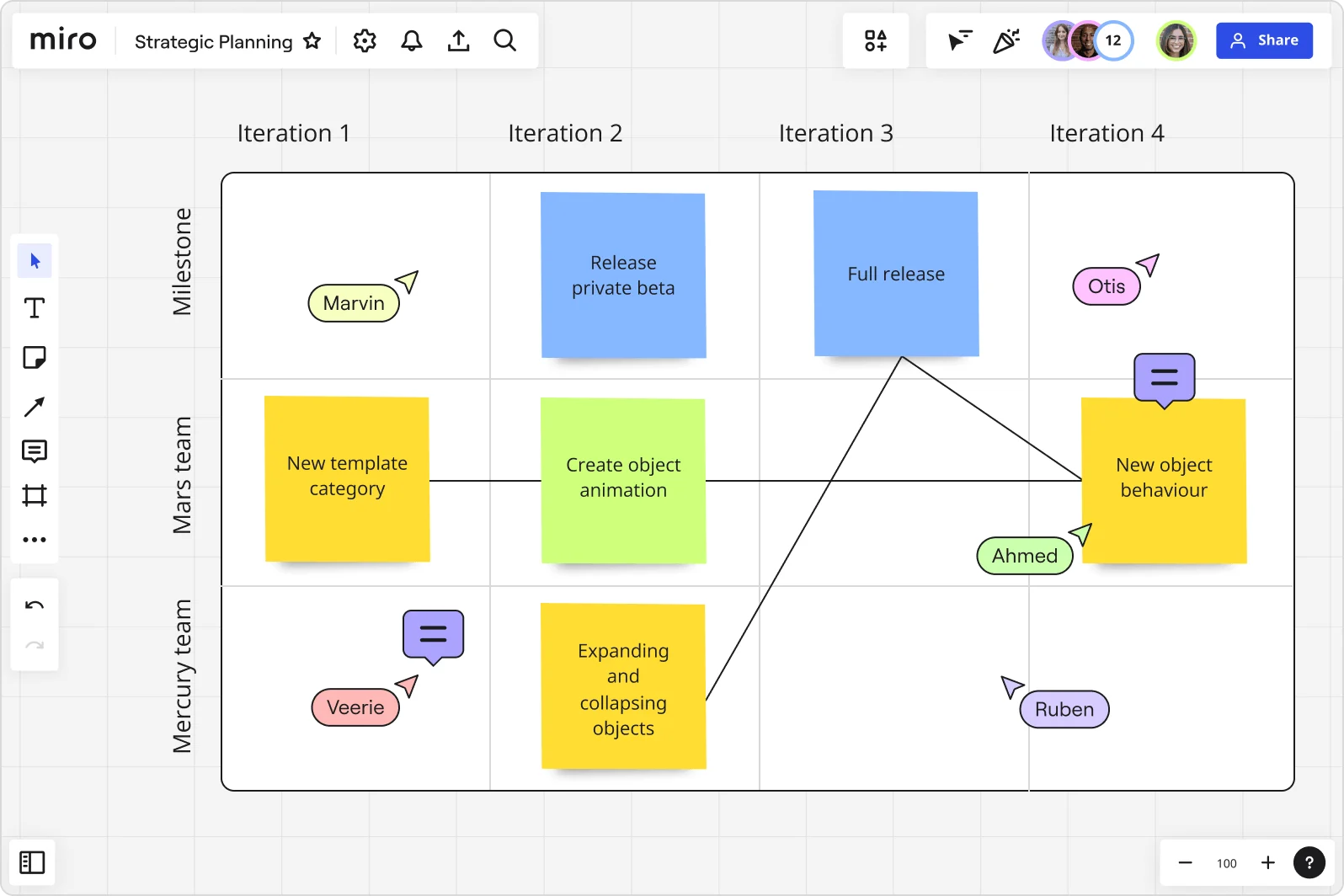
Table of contents
Table of contents
What is a decision matrix?

Definition of decision matrix
A decision matrix, often seen as a key project management tool, is also known as a priority matrix or a criteria matrix. This tool facilitates individuals and organizations in making informed choices by evaluating and ranking alternatives based on predefined parameters. Through a clear visual representation of the options and the criteria, it offers a methodical comparison to help determine the most optimal choice.
When to use a decision matrix
A decision matrix is a beneficial tool when faced with situations that involve:
Multiple choices: Whenever there are several alternatives, you need to select one or prioritize them. Instead of relying on intuition or gut feeling, a decision matrix provides a systematic way to evaluate each choice.
Clear criteria: In situations where the decision-making parameters or criteria are known and can be quantified or rated. This is essential as the matrix works by comparing alternatives against these set criteria.
Reduce subjectivity: In scenarios where biases or emotions might cloud judgment, a decision matrix offers an objective evaluation method to ensure the decision is based on factual and quantifiable information.
Stakeholder alignment: When decisions involve multiple stakeholders, a decision matrix can be a valuable project management tool. By demonstrating a structured comparison, it can be easier to get consensus or at least make the decision-making rationale transparent.
Documentation of decisions: In environments where it's essential to keep a record of how decisions were made (for instance, for regulatory compliance or internal audits), a decision matrix serves as a documented method detailing how a particular choice was arrived at.
While the decision matrix is commonly associated with areas of business like project management, it isn't exclusive to it. This tool is versatile and can be applied across various functions and industries whenever there's a need to evaluate multiple options against specific criteria.
Project management: Project managers can use a decision matrix when they have multiple projects and need to prioritize which one to start with based on criteria such as potential benefits, costs, risks, and resources available.
Hiring process: HR professionals can employ the decision matrix when screening candidates for a position. The matrix can include criteria such as experience, qualifications, cultural fit, and technical skills to ensure a systematic and objective evaluation.
How to create a decision matrix
Creating a decision matrix involves systematically listing options and evaluating them against defined criteria to prioritize or make informed choices. This tool transforms complex decisions into a structured visual comparison.
List down your options: Start by identifying all the potential options or alternatives that you're considering.
Determine the criteria: These are the aspects or attributes that matter the most in your decision-making process. It could be cost, feasibility, time, or any other pertinent aspect.
Assign weights to criteria: Not all criteria might hold equal significance. Assign a weight to each criterion based on its importance. This will allow you to score each option accurately.
Evaluate each option: For each option, assign a score based on how well it meets each criterion. Multiply the score by the weight of the respective criterion.
Total the scores: Sum the weighted scores for each option.
Make a decision: The option with the highest total score will typically be the best choice, but always consider qualitative aspects and external factors as well.
When setting up a decision matrix, starting can be the toughest part. Using decision matrix templates can make this initial step easier. It offers a clear layout and ensures you don't miss any essential details.
Alternatives to consider for decision-making
While a decision matrix is an effective tool, there are other methods you can use to assist in decision-making:
SWOT Analysis: The SWOT Analysis tool examines an option's Strengths, Weaknesses, Opportunities, and Threats. It's particularly useful for strategic planning and assessing the viability of a business venture.
PESTEL Analysis: Using a structured approach can streamline the process of evaluating external influences on decisions. You can use a PESTEL analysis template to ensure a systematic review. Standing for Political, Economic, Social, Technological, Environmental, and Legal, PESTEL analysis delves deep into these macro-environmental factors, offering insights that could significantly impact choices.
Risk assessment matrix: To thoroughly and systematically assess risks associated with certain decisions, utilizing risk assessment templates is beneficial. This matrix evaluates options based on the likelihood of risk occurrence and its potential impact, ensuring that potential challenges are properly anticipated and addressed.
In conclusion, a decision matrix is a versatile and effective tool for decision-making across various domains. While there are other methods available, the decision matrix stands out due to its systematic and objective nature, making it a go-to choice for many professionals and organizations.